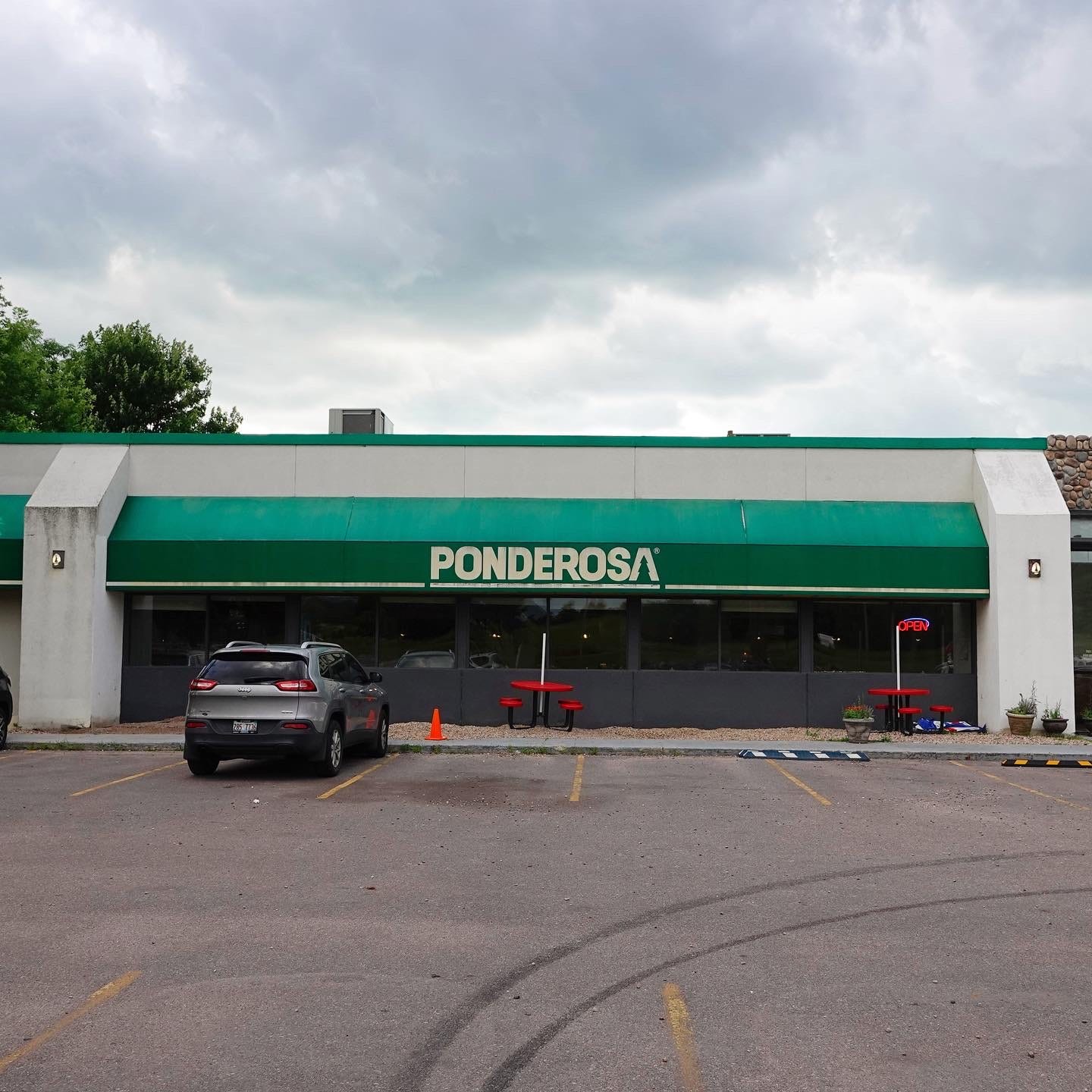Last scoop looms for 88-year-old ice-cream shop; McDonald's mansard survivor served death warrant; last chance to visit Neon Museum of Philadelphia | Rolando's Roadside Roundup
Plus, a salute to one Ponderosa and a farewell to two Sizzlers and many more headlines from the American road!
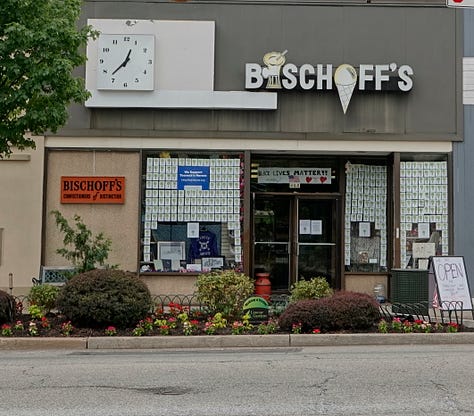

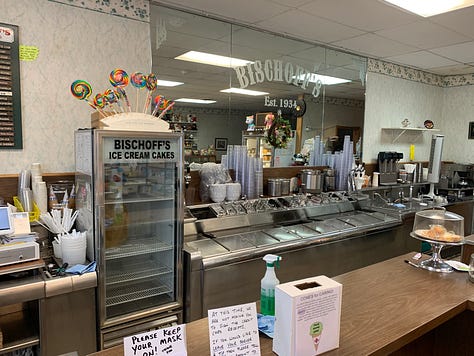
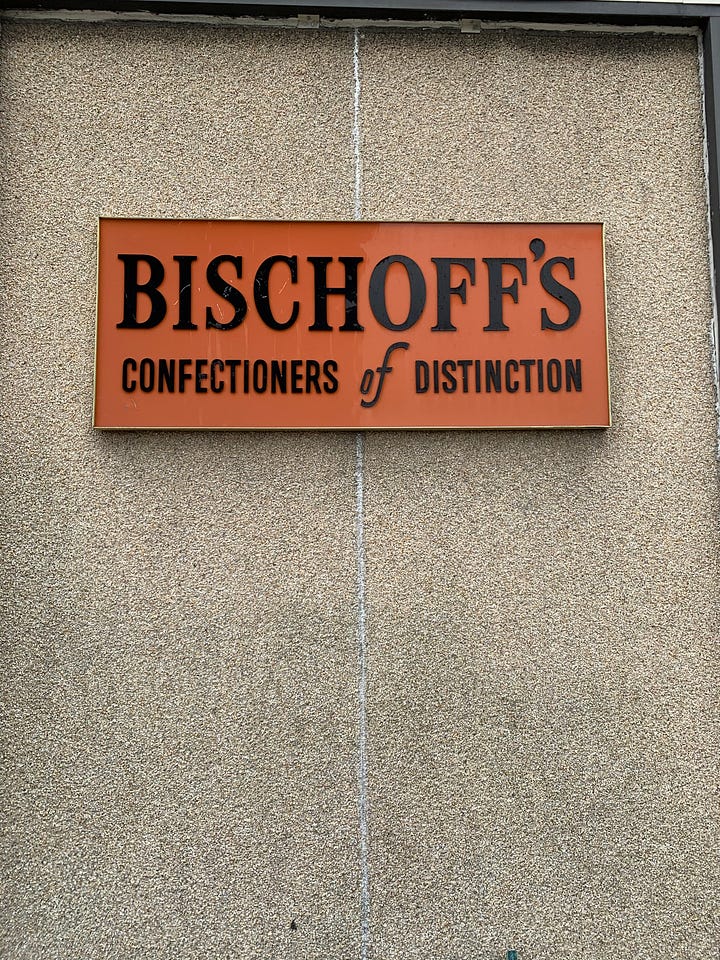
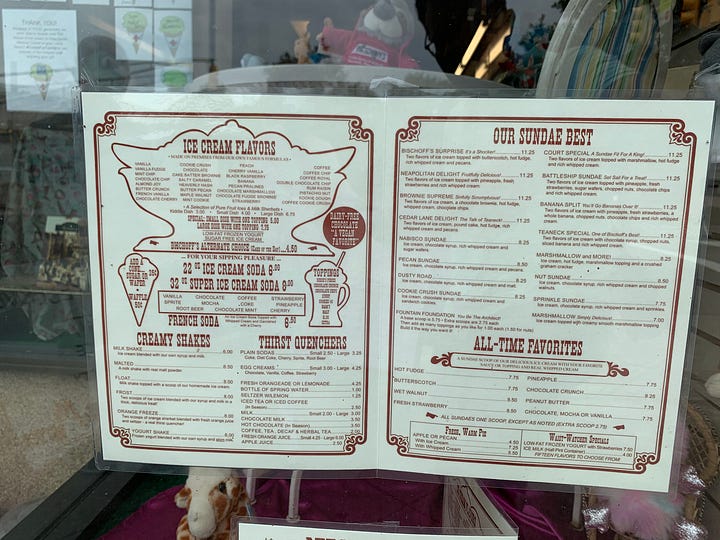
When an ice-cream shop makes it to the age of 88, with roots that go back to the late 19th century, you can be forgiven for thinking it won’t just melt away overnight.
Alas, it is impossible to overstate how hostile the past three years have been for small businesses, drowning in the initial waves of COVID, coming up short in a labor shortage and robbed of preciously thin profit margins thanks to spiraling inflation.
Running a small business is hard even in good times, and you may have noticed these are bad times.
And so Bischoff’s, an ice-cream parlor and candy shop that opened on Cedar Lane in Teaneck, New Jersey, in 1934, has announced it is closing forever on Dec. 31, 2022.
The business is much older than that — it got started in Manhattan in the 1890s, and now, Anita Mather and her son, Steven, have made the painful decision to close the concern that Anita’s grandfather opened.
Anita Mather told my colleague Anthony Johnson of Eyewitness News that the decision came down to simple math: they were spending more than they were making.
"We'd love to keep going, but our expenses … we are not taking in as much as we are putting out," Mather said.
She continued, through tears: "There are generations of people who have come here, and have been customers, and have worked here and it is really sad to disappoint them," Mather said.
Anita Mather will be retiring, but her son isn’t quite at that point in his life yet. He’ll have to find a new job.
He’s certainly a realist — he understood Bischoff’s could not go on forever, and even before the pandemic, he’d been preparing for this day. Changes they made before the pandemic were helping business, but things never quite rallied. His kids have other interests, too, so there’s no hope the next generation will make a go of Bischoff’s, so Steve’s dreams of keeping the place going another decade or so have been dashed.
"We're at the point where we just need to close and say it's been a great life," Steve Mather told the Bergen Record. "And it has."
The photos here are from my visit to Bischoff’s in June 2020, when the business was struggling in the early days of the pandemic. It fought the good fight, right to the last scoop.
Sadly, it’s lights out this weekend at the Neon Museum of Philadelphia — go if you can!
The Neon Museum of Philadelphia is home to a wonderful collection, offering an experience that envelops you in light, warmth and wonder.
Sadly, the museum is closing on Sunday, barely two years after founder Len Davidson found a home for these works of art, once utilitarian signs rescued from destruction.
In the post below (and linked here), I have a preview of what you will see, and if you can’t make it, consider it a virtual tour that I hope you will find as enjoyable as I did when I visited a couple of months ago.
This post is available to my paid subscribers. If you enjoy and appreciate what I do, please consider supporting my work by becoming a paid subscriber!
McMansard in Virginia to be McBoxed — but classic giant-arches sign will be preserved
The mansard story begins in 1968, with McDonald’s CEO Ray Kroc frustrated by increasingly hostile local zoning boards and community groups. The walk-up “red and white” tile stores flanked by yellow arches were not popular with what I like to call “the self-appointed arbiters of good taste” in America’s small towns and cities. That original design was seen as a holdover of highway culture, with garish buildings and signage. This sort of place had no business being in the proper downtowns of Any Town, USA, or so was the prevailing sentiment.
And so Kroc set about fixing the architecture to ensure McDonald’s could keep marching coast to coast, and the fix was the mansard building, with its nod to domestic architecture of the late 19th century, brick walls, dining rooms, and parking lots full of family cars, not teenagers roaming about munching on fries.
A generation later, the architecture was the problem again. Now, the mansard was seen as tired, an obsolete design in the age of slick Starbucks stores. The McMansards became the whipping boy for so many of the chain’s problems.
So, starting in 2006, with the arrival of the first “eyebrow” building in Ohio, the death warrant was signed on the McMansard.
I love this line from the Chicago Tribune article linked in the previous graph, emphasis added by me:
And there's more than a grain of truth to the argument of dissident franchise operators that the planned remodeling of McDonald's exteriors, which hides the mansard roof behind a tacked-on front with an eyebrow-shaped yellow arch, differs little from the bland, brick-and-awnings facades of an Applebee's or a Panera Bread. It's as if McDonald's has gone too far in doing penance for its decades of architectural sins.
Little did the writer of this article know what was coming.
In recent years, the demolitions of the mansards picked up such speed that a building once taken for granted and deemed by some unworthy of preservation-minded photography suddenly became precious indeed. So much so that I’ve been known to drive hundreds of miles to shoot what was a ubiquitous design just a decade ago.
To wit, the mansard McDonald’s on 6729 Arlington Blvd. in West Falls Church, Virginia, will soon be transformed into a grey box.
It will likely be the third building on the site, as this McDonald’s first opened in 1958. (In fact, this franchise may be the second-oldest McDonald’s in the commonwealth.) That first building was likely the old “red and white,” followed by the mansard, and now, the box.
One bit of good news for those who admire the old architecture — or have a sentimental attachment to it, which is probably the better way to describe what we feel for them — is that the large sign from the 1960s (the Big M, as I like to call it) will be preserved.
I’m also flagging another McDonald’s nearby that is not a mansard but has a very stylish modernist feel, sort of like a 1970s-80s suburban wooden townhouse.
Anyway, I’ll be driving by here two weeks from now on a holiday family road trip. I’ll be sure to share pictures!
Notes From the Road
In my previous newsletter, I brought you the story of the White Plains Mall, which has long been dead but is now razed as well. On Thursday, the sign was wrecked in a groundbreaking ceremony for the housing complex that will replace the mall. Watch the video above and read more about what will happen here.


Since we’re talking about old-school McDonald’s, the chain continues to embrace it past, at least in marketing, even as it erases its old architecture. Check out this swag they are selling, especially the Hamburglar hoodie, with a proper circa-1970 sign! [Elite Daily]
It’s not a good time for stores called Bob’s Army and Navy. Bob’s in Ossining, New York, is closing, and a Bob’s in Clearfield, Pennsylvania, closed earlier this year.
A Green Bay apartment complex from 1971 has been listed on Wisconsin’s State register of Historic Places for its role in the area’s social history. [Fox 11]
A doomed historic clubhouse from 1929 in Las Cruces, New Mexico, may receive a stay of execution. [Las Cruces Sun News]
Historic neon chopsticks will glow anew at this Vancouver restaurant. [MSN]
Stop. Demolishing. Harlem. Landmarks. That’s the message of this article, though other neighborhoods know this problem all too well. Here’s how the racket works: A landmarked building is allowed to go to seed, and the only “option” then is to knock it down and redevelop it in the way the developer actually wants it. Pretty sneaky sis, but people are on to this game — and tired of it. [Harlem World]
Speaking of landmarking, a high school in the Bronx has been designated a city landmark. [News 12]
I lived in Allentown, Pennsylvania, for four years at the start of my career, and loved the crusty, rusty sign for Sal’s Spaghetti House. You’ll fall in love with it, too, after reading this article. [Molovinksy on Allentown]
The Four Aces Diner is West Lebanon, New Hampshire, has been open on and off since 1952. Now, it could be your chance to keep it set to “on.”
A buyer would get one of the busiest and best-loved establishments in the Upper Valley. On the weekends, there’s often an hourlong wait for a booth. According to Shorey, the diner goes through about 500 dozen eggs a week.
That’s a lot of eggs. [Valley News]
Fun article! The Daily Meal ranks the 12 biggest fast-food rivalries, from Zaxby’s vs. Bojangles to McDonald’s vs. Burger King! [Daily Meal]
And the most popular fast-food chain in Missouri is? “Show me,” you say? OK, it’s Taco Bell! [KY3]
The Sizzler in Canyon County, Idaho, has been deemed “unsustainable” and has closed after 45 years. [Idaho Statesman]
This follows the closure of ANOTHER Sizzler in Sparks, Nevada, earlier in November. Can I just say how much I LOVED Sizzler as a kid. It was my first salad bar. You never forget your first, they say. [Reno Gazette Journal]
Curious now? Learn about the Sizzler origin story. [KQED]
A profile of a place I visited last summer, the Ponderosa in Wisconsin Dells, gets the feature treatment. [WiscNews]
And my previous newsletter that mentions Ponderosa, among other interesting things. [The Retrologist]
A Personal Note: Please consider joining my newsletter and becoming a paid subscriber. Paid subscribers will be getting exclusive content PLUS can reach out to me for trip-planning advice and more! Perhaps more importantly, you get the satisfaction of supporting my mission to document roadside Americana! It’s hard — and expensive — work! Thanks for your support!









